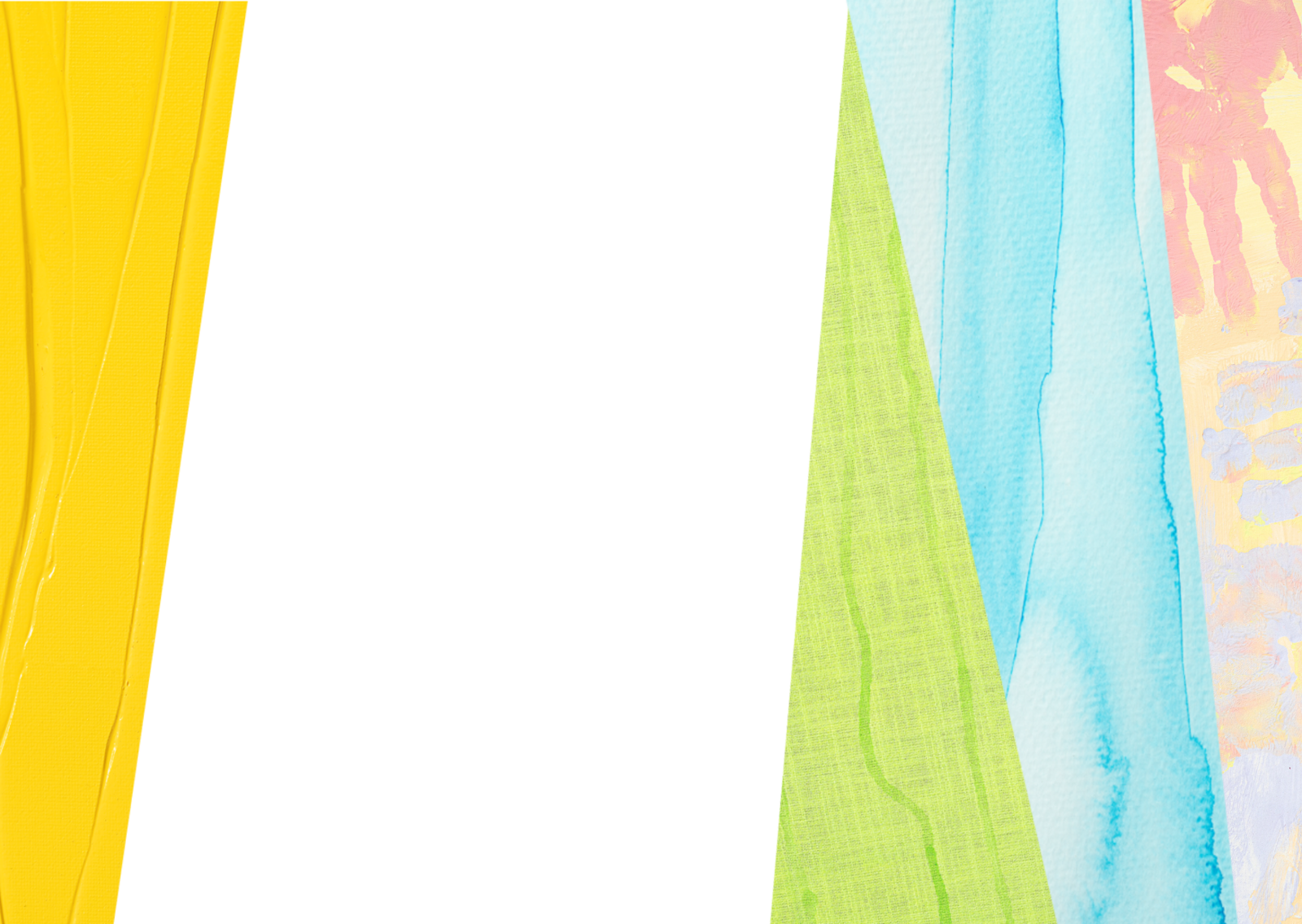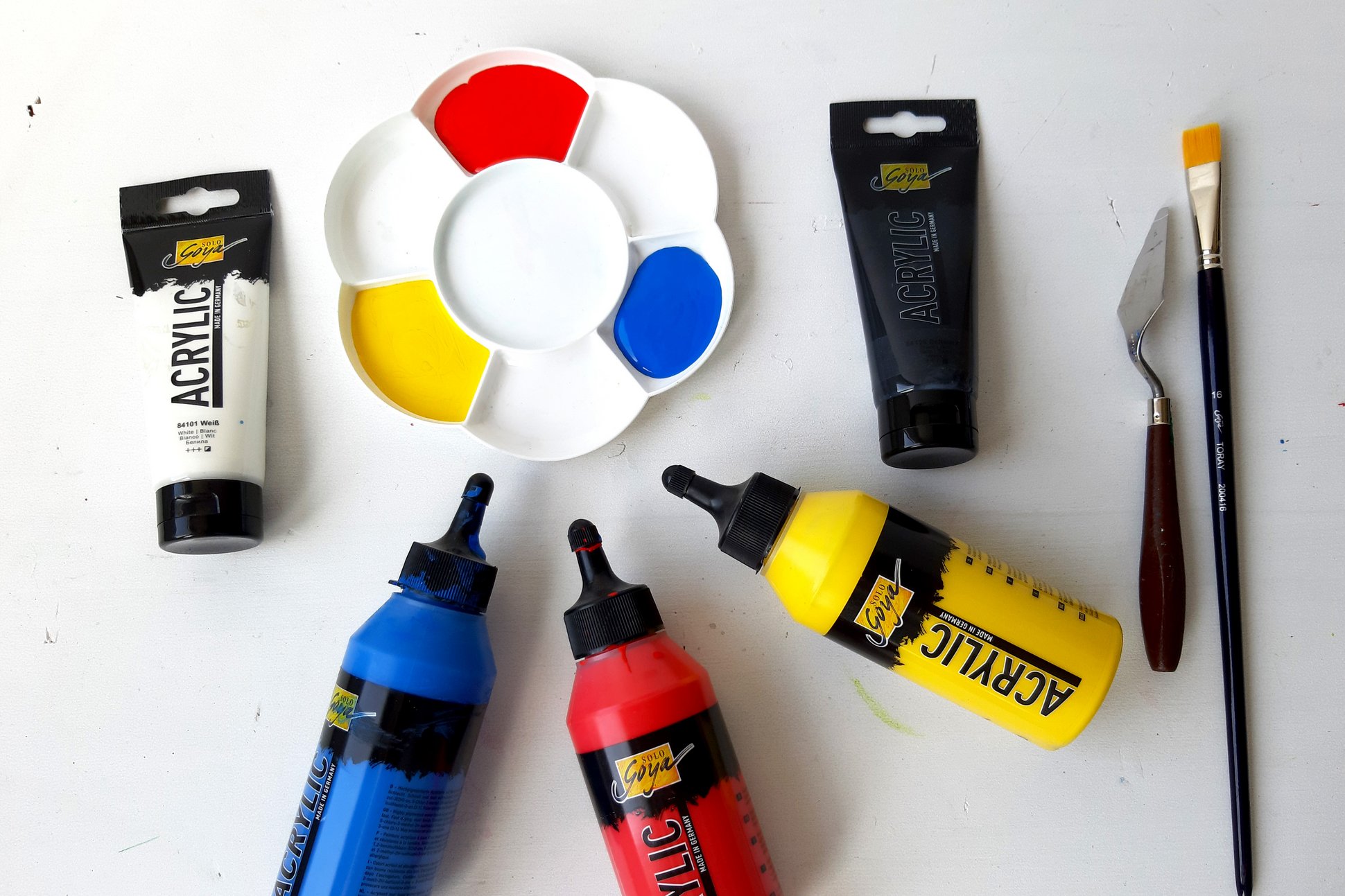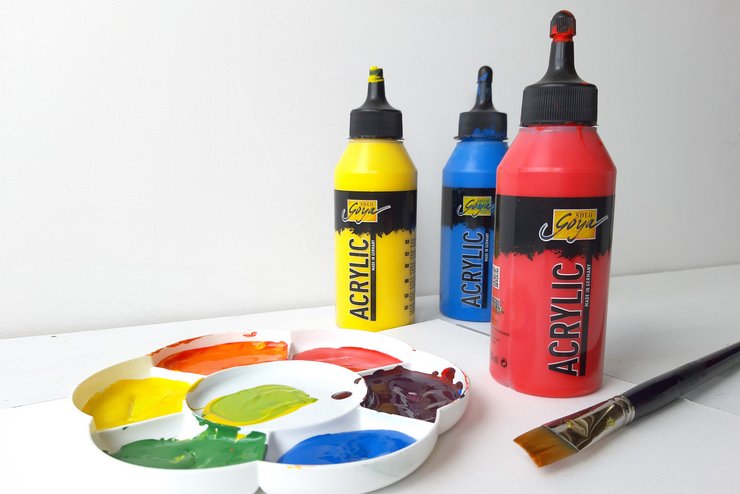
Red, yellow, blue – three basics for all other colours
07/19/2023 |- SOLO GOYA Acrylic
- Ideen für Künstler

Mixing according to the colour wheel
The colour wheel shows that all other colours can be mixed from the primary colours blue, yellow and red. These colours themselves can, however, not be mixed from other colours. That's why red, yellow and blue are also known as primary colours and positoned at the centre of the wheel. The outer ring is formed by the colours that result from each mix. The circular shape clearly shows that mixed colours can blend into each other. In more complex colour wheels, light and dark variations of the mixed colours are also shown. We recommend that you paint your own colour wheel. By mixing colours yourself, you learn so much – and it's lots of fun, too. As primary colours, you can get started with the following SOLO GOYA Triton Acrylic or SOLO GOYA Acrylic colours: Genuine Yellow Light, Primary Blue and Genuine Red.
The idea of the colour wheel is not new. Even the Greek philosopher Aristoteles (384 BC - 322 BC) arranged colours along a straight line. In 1704, the English physicist Sir Isaac Newton published a colour wheel consisting of seven colours. Johann Wolfgang von Goethe developed a colour wheel from the basic colours yellow, crimson red and blue along with the three mixed colours green, orange and violet. Common today is the colour wheel devised by the painter Johannes Itten (1888 - 1967). The master teaching at Bauhaus in Weimar formed a 12-segment colour wheel from the primary colours red, yellow and blue.
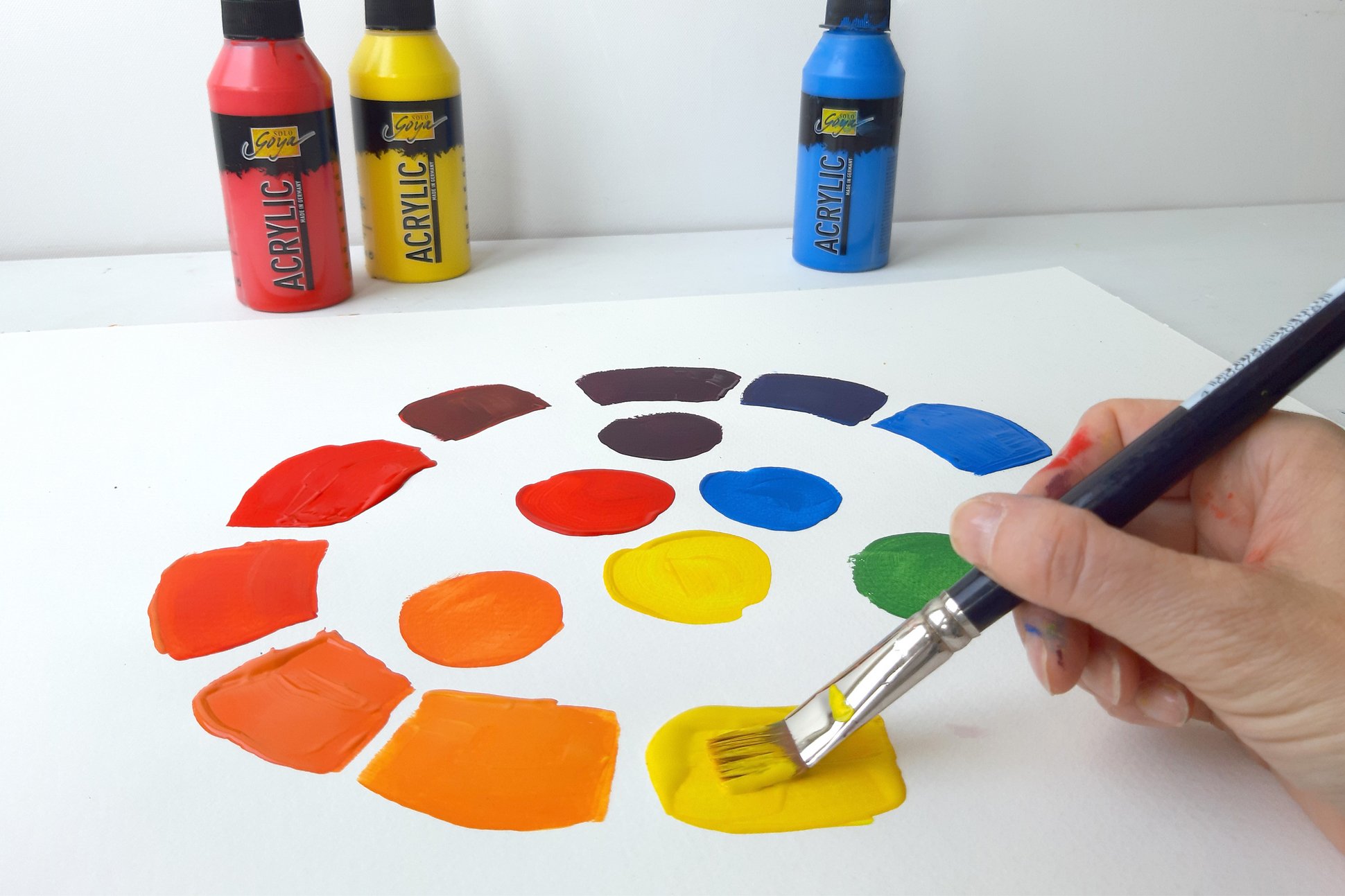
Classification of colours: primary, secondary and tertiary
Colours mixed from two primary colours are called secondary colours. In Itten’s colour wheel, these are orange (mixed from red and yellow, violet (from red and blue) and green (from blue and yellow). Another six intermediate shades in Itten’s colour wheel are the tertiary colours. They are mixed from one secondary colour and one primary colour, e.g. blue and green mixed to bluish-green or red and orange to reddish orange. Itten’s colour wheel comprises a total of twelve colours. Artists use his model as a practical guide for easy mixing of colour shades.
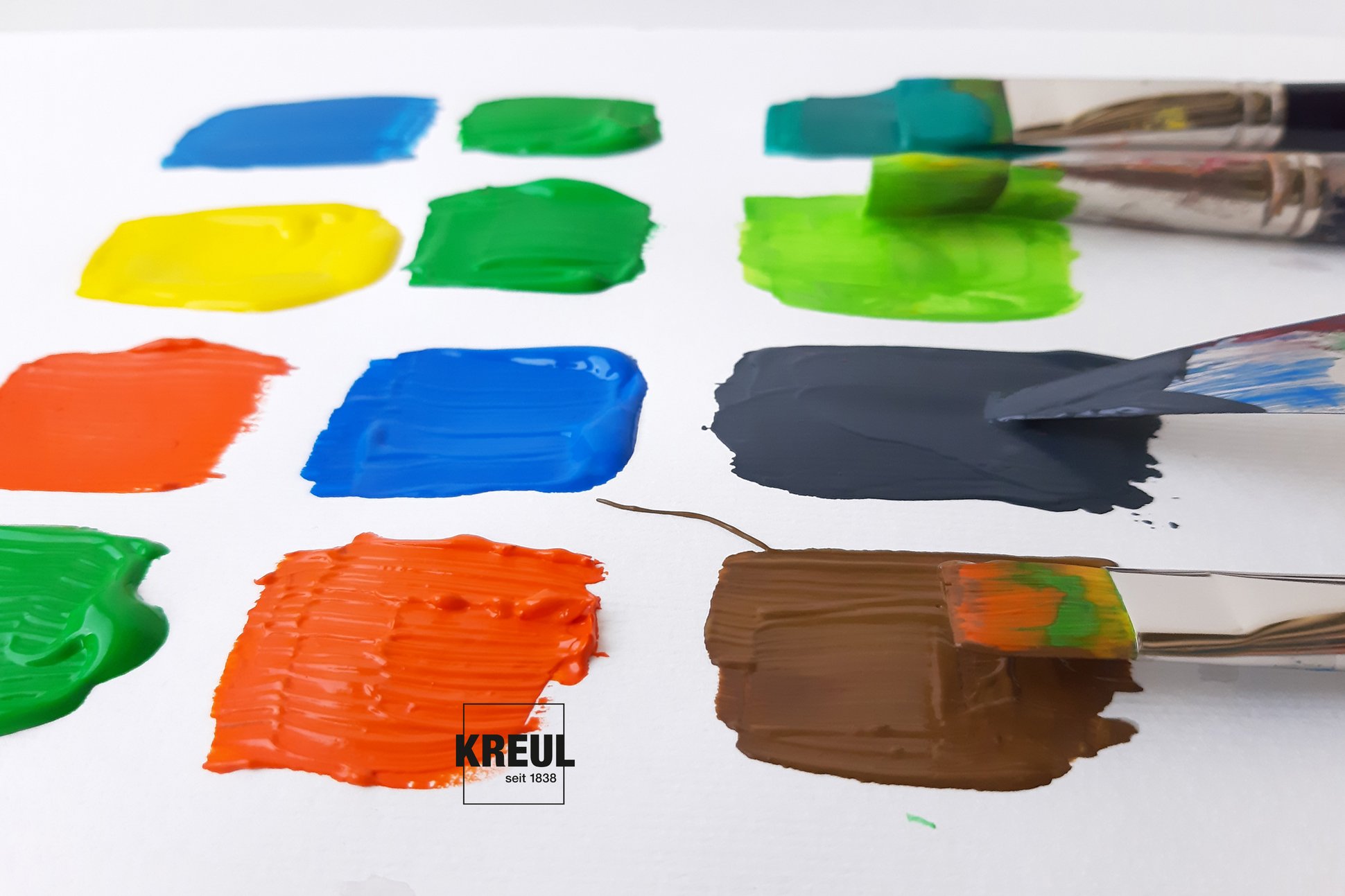
How do you mix intermediate shades?
We have already explained how you mix tertiary colours and other shades. Depending on how much of the starting colour you add to the mix, you get a different variation.
Petrol = blue & green
May green = yellow & green
Anthracite = orange & blau
Brown = green & orange
If you add white to the mix, you get ligher variations. For instance, green, blue and white will get you mint. But you can only lighten red with yellow, with white you would get pink. You can darken colours with a splash of black. Though they look more natural with umbra instead.
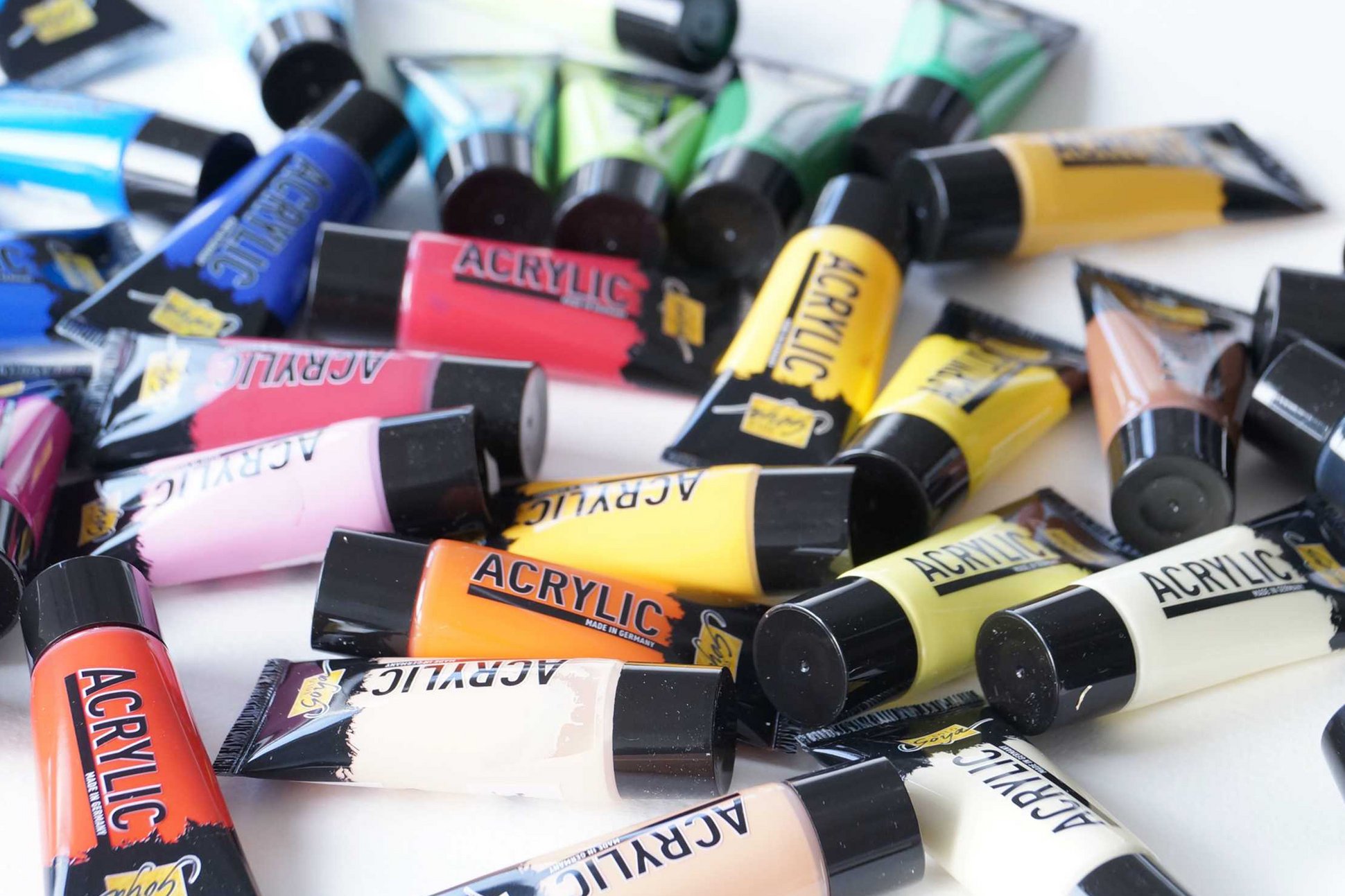
Ready-mixed and ready-to-paint colours from KREUL
The more colours you mix with each other, the finer the nuances you can get. However, a mixed colour becomes "muddier" with every extra colour you add. Too many pigments can "grey" colours. Sometimes, though, you may want tinted grey colours as a contrast to make brighter colours really pop. If you want brilliant intermediate colours, then ready-mixed colours are the ideal choice. When we mix our colours in our laboratory, we use only as many pigments as necessary, to make sure our ready-mixed colours radiate colour brilliance. So it's handy that you can get SOLO GOYA Triton Acrylic and SOLO GOYA Acrylic in a spectrum of premixed colour shades. Whether you choose to mix your own colours or squeeze colours straight out of a tube depends on the effect you want to get with your artwork. Both options have their uses. We think that mixing colours is fun, always turning up a surprise and part of the painting process. But you can only rely on ready-mixed colours.
